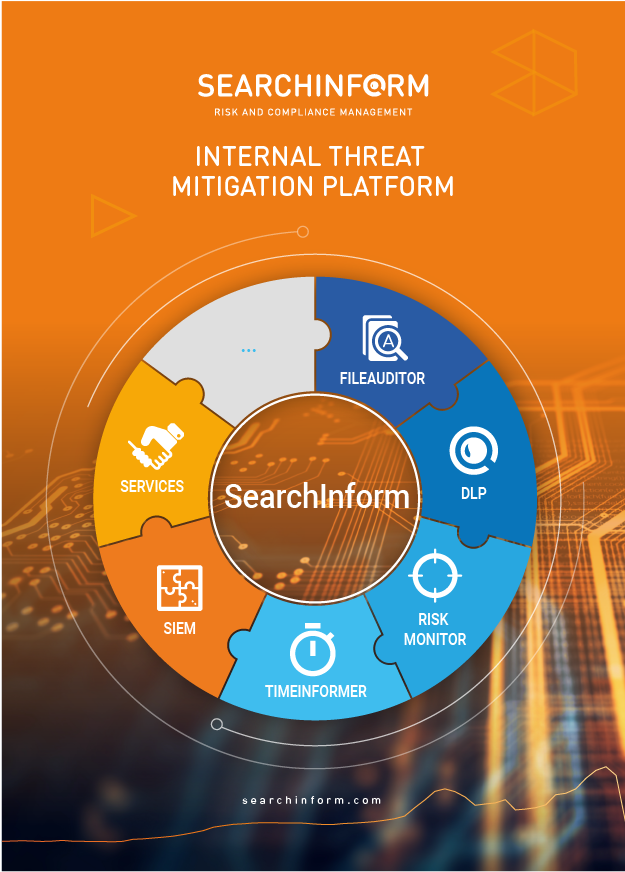Incident Forensics with SIEM: A Comprehensive Guide
Introduction to Incident Forensics with SIEM
In the fast-paced world of cybersecurity, it's not enough to simply react to incidents after they happen—you need to understand the who, what, when, where, and why behind every breach. This is where incident forensics with SIEM steps in. Think of it as the Sherlock Holmes of the digital realm, piecing together clues to uncover how an attack occurred. With SIEM forensics, organizations don’t just play defense—they become proactive detectives, solving cyber mysteries before they escalate.
Defining Incident Forensics
So, what exactly is incident forensics? Picture this: your network has just been breached, and you’re left wondering how it happened. Incident forensics is the process of retracing the steps of cybercriminals, digging through digital footprints, and analyzing every move they made. By using SIEM-based incident forensics, this isn’t a game of guesswork. It’s a well-orchestrated investigation that gathers logs, analyzes events, and makes sense of the chaos.
In short, SIEM tools for forensics give you the power to understand not only what went wrong but how to stop it from happening again.
The Role of SIEM in Incident Forensics
Think of SIEM as the command center for your entire security operation. It’s like having a digital detective agency working round the clock, collecting data from every corner of your network, sifting through it, and alerting you when something’s not right. SIEM incident forensics works by:
- Gathering data from all connected devices, apps, and systems like a master sleuth.
- Connecting seemingly random events to uncover a hidden pattern—just like piecing together a complex puzzle.
- Providing detailed logs that tell the whole story of what happened, allowing you to create a timeline of events.
- Speeding up detection so you can respond before things get out of control.
In essence, SIEM-based incident forensics doesn’t just show you where the bad guys struck; it tells you how they did it, making your response faster and sharper.
Why Incident Forensics is Vital in Modern Cybersecurity
In today’s digital world, where threats lurk around every virtual corner, you need more than just a lock on your door—you need a security camera that records every move. Incident forensics with SIEM does exactly that, giving you deep insights into breaches and suspicious behavior. Here’s why it matters:
- Enhanced threat detection: SIEM tools for forensics help you catch threats that would otherwise slip through unnoticed by continuously monitoring traffic and user behavior.
- Quick action: Instead of taking days or weeks to figure out what went wrong, SIEM forensics cuts the response time down to minutes, helping you contain the damage quickly.
- Solid evidence: SIEM incident forensics provides detailed logs and reports, which are gold when it comes to compliance, auditing, and preventing future attacks.
In today’s cybersecurity game, it’s not just about staying safe—it’s about staying ahead. SIEM-based incident forensics helps you do just that, turning your security team from mere responders into digital detectives who can anticipate and neutralize threats before they wreak havoc.
How SIEM Facilitates Incident Forensics
In the constantly evolving world of cybersecurity, staying ahead of threats requires more than just monitoring. It demands a deep understanding of how attacks unfold and the ability to act on that knowledge in real-time. This is where SIEM incident forensics becomes invaluable. From collecting and analyzing vast amounts of data to automating detection, SIEM tools for forensics empower organizations to gain a clear picture of what’s happening within their networks and quickly respond to threats.
SIEM Data Collection and Aggregation
Imagine having eyes and ears across every corner of your organization’s digital infrastructure. That’s essentially what SIEM-based incident forensics provides through data collection and aggregation. SIEM systems gather data from countless sources—such as firewalls, servers, applications, and endpoint devices—bringing it all together into one central hub.
from different sources:
This massive pool of information is essential for SIEM forensics, as it allows security teams to look at everything in context. Instead of jumping between systems to track down clues, Security Information and Event Management forensics consolidates the data in real time, making it easier to spot potential threats and trace the trail of an attack.
Correlation of Security Events
When it comes to incident forensics with SIEM, collecting data is just the beginning. The real power of SIEM lies in its ability to correlate events that might seem unrelated at first glance. For example, an unusual login from one location might not raise alarms, but when correlated with other activities—such as attempts to access sensitive files or modify security settings—it starts to paint a more sinister picture.
SIEM tools for forensics use this correlation to uncover hidden patterns, linking security events from different systems and devices to reveal a comprehensive view of an attack. This is critical for SIEM-based incident forensics, as it helps identify not only the individual events but also the chain of activities that led to a security breach.
Role of Log Management in SIEM-Based Forensics
Logs are the lifeblood of SIEM forensics. Every action taken by users, systems, or applications leaves behind a trail of logs. Whether it’s logging into a system, downloading a file, or adjusting permissions, these logs contain valuable information that can be used for forensic analysis. Incident forensics with SIEM relies heavily on the proper collection, storage, and management of these logs to recreate the timeline of events.
But having logs isn’t enough. Security Information and Event Management forensics systems must ensure that these logs are secure, easily retrievable, and searchable. This means storing them in a way that prevents tampering while also making it easy for security teams to sift through them when investigating an incident. Efficient log management makes SIEM-based incident forensics faster and more effective.
Automated Detection and Alerting in SIEM Systems
In the fast-paced world of cybersecurity, time is of the essence. One of the standout features of SIEM forensics is its ability to automate detection and alerting. Rather than relying on human intervention to catch every threat, SIEM tools for forensics continuously monitor your network for signs of trouble, automatically triggering alerts when specific thresholds are met or unusual activity is detected.
This automated detection process allows security teams to respond to incidents in real-time, reducing the risk of prolonged exposure to threats. And because these systems are customizable, organizations can set up alerts tailored to their unique needs, further enhancing their incident response capabilities.
Incident forensics with SIEM is all about giving organizations the tools and insights they need to not only detect threats but also understand the full scope of an attack. From collecting and correlating data to automating response efforts, SIEM-based incident forensics plays a critical role in modern cybersecurity strategies.
Stages of Incident Forensics with SIEM
Navigating the complex world of cybersecurity threats requires a strategic approach. SIEM incident forensics is the roadmap that guides organizations through the chaos, providing clarity and control when handling security breaches. From detecting the initial threat to thoroughly analyzing events, SIEM forensics plays a vital role in the cybersecurity toolkit. Let’s break down the key stages involved in incident forensics with SIEM and how it empowers organizations to defend against evolving threats.
Initial Incident Detection Using SIEM
The first stage in any SIEM-based incident forensics process is the detection of the initial threat. SIEM systems act as an ever-vigilant watchdog, constantly scanning network traffic, user activity, and system logs. The goal is to identify anomalies that signal a potential security incident. Whether it's a suspicious login from an unfamiliar location or an attempt to access restricted data, Security Information and Event Management forensics systems provide early warnings.
These alerts are generated in real-time, ensuring that security teams can act swiftly. SIEM tools for forensics rely on predefined rules and patterns to spot irregularities and send out notifications the moment something doesn’t look right. This stage is crucial because the faster a threat is identified, the quicker steps can be taken to prevent it from escalating.
Event Analysis and Investigation
Once an alert is triggered, the real work begins: diving into the details. Incident forensics with SIEM shines at this stage by enabling a deep analysis of the event. SIEM systems collect vast amounts of data from different sources across the network. Security teams can then sift through this data, piecing together the story of the incident.
This investigation involves examining logs, system activities, and user actions to determine the root cause of the alert. SIEM-based incident forensics allows for a granular view of what happened, when, and how. This detailed analysis helps identify whether the threat is legitimate or a false positive, and if real, how far the attack has penetrated the system.
Data Correlation and Pattern Identification
In the world of SIEM incident forensics, data correlation is key. After the initial analysis, SIEM systems take things a step further by correlating events from various sources. This means linking seemingly unrelated events across devices, users, and applications to identify patterns that suggest a coordinated attack.
For example, a single failed login attempt might not raise alarms, but when combined with other suspicious activity, it can paint a picture of a potential breach. SIEM tools for forensics excel at connecting these dots, turning individual events into a coherent timeline. This capability is particularly useful for identifying advanced persistent threats (APTs), which often involve multiple small steps spread across time and systems.
Reporting and Documentation for Compliance
A significant part of SIEM-based incident forensics is the reporting and documentation that follows the investigation. In many industries, regulatory compliance requires detailed reports of security incidents, whether or not they resulted in a breach. Security Information and Event Management forensics systems automatically generate comprehensive reports, documenting the incident from start to finish.
These reports include logs, timelines, analysis, and conclusions, all of which are critical for auditing purposes and ensuring compliance with frameworks such as GDPR, HIPAA, or PCI DSS. Beyond compliance, thorough documentation helps organizations learn from incidents, improving their security posture by identifying vulnerabilities and making adjustments for the future.
Incident forensics with SIEM offers a structured and comprehensive approach to detecting, analyzing, and responding to security incidents. From the moment an alert is triggered to the detailed reports produced afterward, each stage of the process is crucial for maintaining a strong defense against cyber threats.
Key Features of SIEM for Incident Forensics
In the modern world of cybersecurity, incident forensics with SIEM is more than just a safety net—it's an active toolset for analyzing, detecting, and preventing threats. SIEM forensics combines various features to help security teams respond to incidents quickly and efficiently, reducing damage and mitigating risks. Below, we explore the core features that make SIEM-based incident forensics a vital part of any cybersecurity strategy.
Real-Time Monitoring and Alerting
Real-time monitoring is at the heart of SIEM incident forensics. The ability to track network traffic, user behaviors, and system activities as they happen provides organizations with an immediate understanding of potential security events. SIEM tools for forensics scan through vast amounts of data in real-time, flagging anything that deviates from normal patterns.
The alerting capabilities are just as critical. Security Information and Event Management forensics systems are designed to automatically send alerts to security teams whenever an anomaly is detected. These alerts can range from suspicious logins to more severe issues like attempted data breaches. This real-time response allows teams to investigate and act on threats immediately, minimizing damage.
Log Management and Retention
Logs are the building blocks of SIEM forensics. Every action on a network—whether it’s accessing a file, logging into a system, or altering a setting—leaves behind a log. SIEM-based incident forensics leverages these logs, storing them securely and efficiently for future use.

But it’s not just about collecting logs. Effective log management ensures that this data is retained for the necessary amount of time, often dictated by regulatory requirements. This retention period is vital in helping organizations perform long-term forensic investigations, where they may need to analyze events that occurred weeks or even months ago.
Event Correlation and Analysis Tools
One of the key benefits of SIEM tools for forensics is their ability to correlate events across multiple systems and sources. SIEM incident forensics isn’t just about monitoring isolated incidents; it’s about drawing connections between seemingly unrelated events to uncover the bigger picture. For instance, an unusual login attempt combined with abnormal data access can indicate a coordinated attack.
SIEM-based incident forensics uses advanced correlation and analysis tools to piece together these events, making it easier for security teams to identify complex threats. This capability is particularly useful in detecting advanced persistent threats, where attackers use stealthy methods over long periods to evade detection.
Advanced Search Capabilities
Investigating a security breach often means sifting through large volumes of data, and this is where advanced search capabilities come into play. Security Information and Event Management forensics systems allow security teams to search through logs, events, and alerts using customized queries. Whether it’s filtering data by IP addresses, timestamps, or specific user actions, advanced search tools streamline the process of finding relevant information quickly.
This feature of SIEM forensics not only makes investigations faster but also more efficient, allowing teams to zero in on the most critical aspects of an incident without being bogged down by irrelevant data.
Integration with Other Security Tools (e.g., SOAR)
A well-rounded cybersecurity strategy doesn’t rely on SIEM alone. SIEM-based incident forensics often integrates with other tools like SOAR (Security Orchestration, Automation, and Response) to create a comprehensive defense system. This integration allows for enhanced incident response capabilities by automating certain aspects of security operations, such as triaging alerts or initiating predefined response protocols.
By connecting SIEM tools for forensics with SOAR, organizations can automate routine tasks, freeing up security analysts to focus on more complex and critical threats. This collaboration between tools amplifies the efficiency of SIEM incident forensics, enabling faster and more precise responses.
In the realm of cybersecurity, the key features of SIEM incident forensics—real-time monitoring, log management, event correlation, advanced search, and integration with other tools—work in harmony to provide a comprehensive defense strategy. These capabilities ensure that organizations are not only able to detect threats but can thoroughly investigate and respond to them, safeguarding their digital assets.
Benefits of Using SIEM for Incident Forensics
In the complex and fast-moving landscape of cybersecurity, organizations need tools that not only detect threats but also streamline investigations and improve response times. SIEM incident forensics provides exactly that—a powerful platform that enhances security teams' ability to detect, analyze, and respond to incidents. Let’s explore the key benefits of using SIEM tools for forensics in managing modern cybersecurity threats.
Enhanced Threat Detection and Response Times
Speed is crucial when it comes to cybersecurity. The longer an attack goes unnoticed, the more damage it can inflict. One of the biggest advantages of using SIEM-based incident forensics is its ability to enhance both detection and response times. SIEM tools for forensics continuously monitor network activity, capturing and analyzing data from multiple sources in real-time.
By doing this, Security Information and Event Management forensics systems can identify suspicious behavior and generate alerts within seconds. This real-time detection means that security teams can respond much faster, containing threats before they spread. The result is not only faster response times but also more proactive threat management, which is crucial in minimizing damage from cyberattacks.
Improved Accuracy in Detecting Security Incidents
With the sheer volume of data that flows through modern networks, distinguishing between genuine threats and benign activities can be challenging. SIEM incident forensics brings a higher level of accuracy to the detection process. By correlating data from various sources—such as firewalls, user behavior logs, and system activities—SIEM forensics helps to reduce false positives and focus attention on real security risks.
Incident forensics with SIEM leverages advanced algorithms to analyze patterns and identify complex threats that might otherwise go unnoticed. This level of precision reduces noise, enabling security teams to concentrate on the incidents that truly matter. In an environment where time and resources are often limited, this improved accuracy is a game-changer.
Comprehensive Audit Trail for Investigations
One of the most powerful features of SIEM tools for forensics is their ability to create a comprehensive audit trail. Every action, whether it's a user login, a file access request, or a system change, is logged and stored securely. This creates an extensive record of all network activity, which is invaluable for forensic investigations.
When a security incident occurs, SIEM-based incident forensics allows security teams to trace the steps of attackers, reconstructing the events that led to the breach. This detailed audit trail is also crucial for regulatory compliance, providing the necessary documentation to demonstrate adherence to security protocols. It offers peace of mind, knowing that there’s a clear and reliable record for post-incident analysis.
Centralized Management of Security Data
Another key benefit of Security Information and Event Management forensics is the ability to centralize security data from multiple sources into a single platform. Networks today are complex, with data flowing through numerous devices, applications, and systems. Managing this data efficiently is essential for effective cybersecurity.
SIEM forensics brings all this information together, allowing security teams to access, monitor, and analyze security data in one place. This centralization not only improves visibility but also simplifies the management process. Security teams no longer have to switch between systems to get a complete view of an incident. Everything they need is within reach, streamlining both detection and investigation.
By using SIEM tools for forensics, organizations can improve their ability to detect, respond to, and manage security incidents. Enhanced threat detection, improved accuracy, comprehensive audit trails, and centralized data management are just some of the many benefits that SIEM-based incident forensics brings to the table, helping organizations stay ahead of today’s ever-evolving cyber threats.
SIEM Forensics in Action: Real-World Examples
SIEM incident forensics isn’t just a theoretical tool; it’s a lifeline for organizations that face cybersecurity threats every day. These real-world examples show how Security Information and Event Management forensics are used to detect, investigate, and neutralize threats.
Example 1: Detecting Insider Threats at a Financial Institution
Imagine a financial institution with thousands of employees, each handling sensitive client data. A mid-level manager starts accessing client accounts they don't usually handle. Initially, this activity flies under the radar, but the SIEM tools for forensics begin to notice a deviation from the manager's usual behavior.
In this real-world case, the manager was attempting to steal customer data for personal gain. The company’s SIEM-based incident forensics solution flagged the unusual access patterns, and by correlating this activity with network logs and file transfers, the security team discovered that the manager was transferring confidential data to a personal device after work hours. Thanks to SIEM forensics, the insider threat was identified early, and the manager was intercepted before any financial harm could be done to the customers.
Example 2: Investigating a Ransomware Attack in a Healthcare System
A large hospital system fell victim to a ransomware attack that encrypted patient data and locked administrators out of critical systems. The attackers demanded a massive payment in cryptocurrency in exchange for unlocking the systems. Time was of the essence, with patient care hanging in the balance.
With SIEM incident forensics, the hospital’s security team tracked down the ransomware's origin. Using Security Information and Event Management forensics, they pinpointed the entry point of the attack—an infected attachment in a phishing email. The SIEM tools for forensics allowed the team to correlate this email with the subsequent spread of the malware through the network. Within hours, they had identified all infected systems, isolated them, and started recovery efforts. The detailed logs generated by the SIEM-based incident forensics also helped the team develop new defenses to prevent a future attack.
Example 3: Uncovering Advanced Persistent Threats (APTs) in a Government Agency
A government agency had been unknowingly targeted by an Advanced Persistent Threat (APT) group for months. These attackers were highly skilled, moving slowly to avoid detection while gathering intelligence from sensitive databases. They carefully avoided triggering any obvious security alerts.
In this real-world scenario, SIEM incident forensics played a pivotal role. The SIEM tools for forensics correlated multiple, seemingly harmless events—such as slight changes in traffic patterns and minor user activity anomalies. By piecing together these small indicators over time, SIEM-based incident forensics revealed the larger pattern of an ongoing attack. The security team, using these insights, was able to expose the APT's movements, close off access points, and prevent the exfiltration of classified information, ultimately shutting down the APT operation.
Example 4: Responding to Phishing Attacks in a Retail Business
A major retail company was hit by a targeted phishing campaign during the busy holiday season. Several employees clicked on what appeared to be urgent emails from vendors, unwittingly giving attackers access to internal systems. The attackers used this entry point to attempt to compromise customer payment data.
SIEM incident forensics was the hero in this story. The Security Information and Event Management forensics system immediately detected abnormal login activity and unauthorized access to customer records. Through rapid event correlation, SIEM tools for forensics helped the security team track the attackers’ movements within the network, quickly isolating the compromised accounts. The retail company was able to halt the attack in its early stages, minimizing both the financial damage and the potential loss of customer trust.
Example 5: Mitigating a Data Breach in a Retail Chain
A major global retailer noticed a sudden spike in network traffic between its internal systems and an external IP address. At first glance, this seemed like regular data traffic, but the SIEM tools for forensics flagged it as a potential security concern.
Upon further investigation using Security Information and Event Management forensics, the security team discovered that a hacker had gained access to the company’s payment processing systems and was exfiltrating customer credit card data. By correlating different data points—such as unexpected system access during off-hours and increased data transfers—SIEM forensics revealed the exact method used by the attacker. The retailer quickly blocked the malicious IP, shut down the affected systems, and began the recovery process. Due to SIEM-based incident forensics, the breach was detected early enough to prevent a massive data leak, saving the company millions in potential fines and brand damage.
Example 6: Preventing an IoT Attack in a Manufacturing Plant
An international manufacturing company was rolling out new Internet of Things (IoT) devices across its production lines to improve efficiency. However, as soon as the devices were deployed, strange anomalies in network traffic were detected. The SIEM incident forensics system began registering these unusual events, linking them to external IP addresses previously associated with cybercriminal activity.
With the help of SIEM tools for forensics, the security team realized that the IoT devices had been targeted by cybercriminals trying to exploit vulnerabilities in the equipment’s firmware. SIEM-based incident forensics correlated the unusual data traffic with known attack patterns, enabling the security team to quickly patch the vulnerabilities and block the attackers. Without SIEM forensics, these IoT devices could have been used as an entry point to compromise the company’s entire network.
Example 7: Thwarting a Spear Phishing Campaign in an Energy Company
An energy company with critical infrastructure systems in place was hit by a spear-phishing campaign aimed at high-level executives. One executive mistakenly clicked a link in a sophisticated phishing email that appeared to come from a trusted vendor, unknowingly downloading malware onto the company’s network.
Thanks to incident forensics with SIEM, the company’s security system detected abnormal login activity on the executive’s account and flagged it for further investigation. Security Information and Event Management forensics quickly identified that the malware was attempting to escalate privileges and move laterally within the network. By correlating the spear-phishing attempt with the subsequent system anomalies, SIEM tools for forensics enabled the team to neutralize the malware before it could infiltrate critical systems. In this case, SIEM-based incident forensics prevented what could have been a catastrophic compromise of national energy infrastructure.
Example 8: Identifying Data Exfiltration in a Tech Startup
A tech startup specializing in artificial intelligence was growing rapidly and storing highly sensitive proprietary algorithms in cloud-based systems. One day, the company noticed unexpected spikes in cloud storage access from unfamiliar regions. Using SIEM incident forensics, the security team investigated these spikes, linking them to an insider who had been secretly transferring valuable intellectual property to a competitor.
SIEM forensics played a crucial role in identifying this malicious insider by correlating unusual cloud activity with other suspicious actions, such as attempts to bypass access controls. The startup’s Security Information and Event Management forensics system provided detailed logs and a timeline of events, helping the company swiftly address the data exfiltration and take legal action against the insider. Without SIEM tools for forensics, the company might have lost its competitive edge to a rival.
Example 9: Stopping a Denial-of-Service (DDoS) Attack at a Media Company
A popular online media platform became the target of a massive Distributed Denial-of-Service (DDoS) attack, overwhelming its servers and rendering its website inaccessible. The attack was coordinated from numerous compromised devices worldwide, making it difficult to trace.
Using SIEM-based incident forensics, the media company was able to identify the traffic patterns and the geographical sources of the attack. SIEM tools for forensics allowed the security team to filter out the malicious traffic while maintaining access for legitimate users. By using Security Information and Event Management forensics, the company mitigated the attack within hours, minimizing the impact on their business operations and protecting their reputation. This case highlights the importance of SIEM forensics in managing large-scale, coordinated attacks.
In all these examples, SIEM-based incident forensics has proven invaluable in detecting, investigating, and responding to incidents across various industries. From insider threats and ransomware to advanced persistent threats (APTs), phishing attacks, IoT vulnerabilities, and DDoS attempts, these real-world cases demonstrate just how effective SIEM forensics can be in safeguarding organizations. By leveraging SIEM tools for forensics, companies are better equipped to defend against and recover from a wide range of cyber threats, providing a robust layer of protection for their systems and sensitive data.
Challenges and Solutions in SIEM Incident Forensics
While SIEM incident forensics plays a critical role in detecting and responding to cyber threats, implementing and managing these systems presents certain challenges. Organizations often encounter obstacles like data overload, false positives, and the need for fine-tuning to ensure optimal performance. Let’s explore the common challenges associated with SIEM forensics and the solutions that help address them.
Data Overload and Noise Filtering
In today’s digital environment, organizations generate an enormous amount of data. While SIEM tools for forensics are designed to collect and analyze this data, managing data overload is one of the most significant challenges. Logs from firewalls, network devices, endpoints, and applications inundate SIEM systems, making it difficult to distinguish critical security events from routine network activity. This data deluge often leads to "noise"—irrelevant alerts that can overwhelm security teams.
The solution to this problem lies in SIEM-based incident forensics systems’ ability to filter out unnecessary data and prioritize essential alerts. By setting clear alert thresholds and focusing on high-priority events, Security Information and Event Management forensics systems can minimize noise and enable teams to concentrate on actual threats. Advanced machine learning and AI algorithms can also enhance SIEM tools by identifying patterns and filtering out irrelevant data, making the system more efficient.
Tuning SIEM for Accuracy and Performance
One size does not fit all when it comes to SIEM forensics. Each organization has unique security needs, and tuning SIEM systems for accuracy and performance is crucial to ensure that incident forensics with SIEM produces accurate results. Without proper tuning, SIEM systems might either miss critical threats or trigger too many false alarms.
Tuning involves adjusting rules, thresholds, and filters to suit the organization’s specific environment and risk profile. For example, security teams might configure SIEM tools for forensics to detect unusual login attempts based on the organization’s geographic footprint or operational hours. Regular tuning ensures that SIEM-based incident forensics remains accurate, reducing irrelevant alerts and improving overall performance.
Overcoming False Positives and Negatives
False positives and false negatives are among the most significant challenges in SIEM incident forensics. False positives occur when benign events trigger alerts, while false negatives allow legitimate threats to go unnoticed. Both scenarios can have serious implications—false positives waste resources and contribute to alert fatigue, while false negatives leave the organization exposed to undetected threats.
To tackle these issues, Security Information and Event Management forensics systems use advanced analytics and event correlation. By linking events from various sources, SIEM tools for forensics reduce false positives by highlighting patterns that signal true security incidents. Additionally, continuous monitoring and adjustments help minimize false negatives, ensuring that SIEM-based incident forensics doesn’t overlook critical threats.
Aligning SIEM Configurations with Organizational Needs
No two organizations are the same, and SIEM forensics configurations must align with each organization’s specific security requirements. A common challenge lies in configuring SIEM tools for forensics to fit the organization’s size, industry, and regulatory obligations. For instance, a healthcare provider may need to prioritize compliance with HIPAA, while a financial institution may focus on insider threats and fraud prevention.
The key to success is customizing SIEM-based incident forensics to reflect the organization’s unique threat landscape. This could involve integrating third-party security tools, setting up specific alert rules for high-priority systems, or ensuring that the system complies with industry-specific regulations. By tailoring SIEM incident forensics to the needs of the organization, security teams are better equipped to respond to threats effectively.
In summary, while there are challenges involved in implementing and managing SIEM forensics, solutions like effective tuning, noise filtering, and organizational alignment help maximize the benefits of SIEM-based incident forensics, allowing businesses to strengthen their cybersecurity defenses.
The Future of Incident Forensics with SIEM
As cybersecurity threats become increasingly sophisticated, the tools used to detect and mitigate them must evolve. SIEM incident forensics is a key player in modern security operations, but its future promises even greater advancements. With the integration of artificial intelligence, predictive analytics, and next-generation SIEM technologies, organizations are on the cusp of a new era in threat detection and investigation.
The Role of AI and Machine Learning in SIEM Forensics
Artificial intelligence and machine learning are transforming SIEM forensics by enabling systems to go beyond simple rule-based detection. Traditional SIEM systems rely on predefined rules to flag security incidents, which can sometimes be too rigid to catch emerging threats. However, AI and machine learning bring adaptability to SIEM-based incident forensics, allowing systems to learn and improve over time.
Machine learning algorithms analyze vast amounts of data, identifying patterns and anomalies in real time. This capability allows SIEM tools for forensics to detect subtle behavioral changes, such as deviations in login habits or unusual data access patterns, which might indicate insider threats. These AI-driven systems reduce the need for constant human oversight, enabling faster and more accurate threat detection as they learn and adapt to evolving threats.
As AI continues to advance, incident forensics with SIEM will become even more automated and intelligent, enabling security teams to stay ahead of cybercriminals without being overwhelmed by alerts or false positives.
Predictive Analytics for Pre-Emptive Threat Detection
While traditional incident forensics focuses on responding to threats after they occur, the future of Security Information and Event Management forensics is leaning towards pre-emptive threat detection through predictive analytics. This shift allows organizations to identify and address potential threats before they manifest into full-blown security incidents.
Predictive analytics leverages historical data, real-time monitoring, and external threat intelligence to forecast potential attack vectors. By analyzing trends such as increases in suspicious login attempts or unusual network traffic, SIEM incident forensics can predict where and when attacks are likely to happen. This empowers organizations to proactively strengthen their defenses and take action before an attack occurs.
Predictive capabilities also enhance SIEM-based incident forensics in preparing for zero-day vulnerabilities—attacks that exploit unknown security weaknesses. Instead of waiting for a breach, predictive analytics help identify potential targets and vulnerabilities, allowing security teams to implement preemptive measures to safeguard against future attacks.
Next-Gen SIEM Technologies and Their Impact on Forensics
Next-generation SIEM technologies are revolutionizing incident forensics with SIEM, offering enhanced scalability, integration, and performance. Cloud-native SIEM solutions are at the forefront of this evolution, enabling organizations to monitor and analyze massive amounts of data in real time across complex, hybrid environments. These technologies are becoming indispensable for businesses that rely on cloud infrastructure and require comprehensive security monitoring.
Next-gen SIEM platforms also offer greater integration capabilities, allowing seamless collaboration with other security tools, such as SOAR (Security Orchestration, Automation, and Response). This integration streamlines SIEM-based incident forensics, enabling faster and more efficient response to security incidents. Automated workflows, triggered by predefined rules, allow security teams to quickly address threats, reducing response times and minimizing damage.
The future of SIEM forensics may also see the incorporation of blockchain technology for more transparent and secure logging. With immutable logs and enhanced data integrity, this would bring a new level of trust and reliability to forensic investigations, ensuring that all evidence is tamper-proof and accurately recorded.
As AI, predictive analytics, and next-gen technologies continue to shape the future of SIEM incident forensics, organizations will be better equipped to detect, prevent, and respond to threats with unprecedented precision and speed. These advancements will empower security teams to move beyond traditional threat detection, creating a more proactive, integrated, and intelligent approach to cybersecurity.
SearchInform’s Role in SIEM Incident Forensics
In today’s rapidly evolving cybersecurity landscape, organizations face increasingly complex threats. SearchInform has positioned itself as a key player in SIEM incident forensics, offering a suite of solutions designed to enhance threat detection, analysis, and response capabilities. With unique features tailored for efficient forensic investigation and the ability to integrate seamlessly with existing infrastructures, our SIEM tools empower businesses to stay ahead of emerging threats while ensuring their systems remain secure.
Overview of SearchInform’s SIEM Solutions
SearchInform’s SIEM solutions are built to provide a comprehensive, real-time framework for monitoring, collecting, and analyzing security events. One of the core strengths of our solutions lies in their ability to track network activities and user behaviors continuously. By monitoring system changes and analyzing deviations from typical patterns, organizations are equipped to identify security risks before they can escalate into full-blown incidents.
Our SIEM solutions centralize data collection from various sources, including firewalls, endpoint devices, applications, and cloud environments. This holistic approach to data collection ensures that no security event goes unnoticed. It also allows security teams to analyze and correlate data across different layers of their network, giving them the complete visibility they need to make informed decisions. For SIEM-based incident forensics, this centralized data collection is critical, as it accelerates the investigative process, enabling faster detection and response.
What truly sets our solutions apart is the capability to process vast amounts of data in real time. This is essential for today’s high-speed environments, where threats can emerge and evolve in seconds. Real-time alerts generated by our system ensure that security teams are promptly informed about suspicious activities, allowing for rapid response and minimizing potential damage.
Unique Features of SearchInform for Incident Forensics
When it comes to incident forensics with SIEM, SearchInform’s solutions stand out due to several unique and advanced features.One of them is cross-correlation. Combining current data obtained from different sources, comparing them based on security policies, allows us to select the most critical events from millions of events that require immediate response.
Our log management system is another cornerstone of SIEM forensics. SearchInform’s solutions not only securely collect and store logs from a variety of sources but also make them easily searchable. This is particularly useful for forensic investigations, as it allows security teams to quickly reconstruct incident timelines, tracing back to the root cause of an issue. In industries where regulatory compliance is critical, such as healthcare and finance, having a robust log management system is indispensable. We provide automated reporting tools that align with industry standards, ensuring that our clients are always compliant while also receiving the insights they need to improve their overall security posture.
Integrating SearchInform with Existing Security Infrastructure
A major advantage of SearchInform’s SIEM tools is their flexibility and compatibility with existing security infrastructures. In today’s complex IT environments, organizations often rely on a combination of different security solutions—firewalls, intrusion detection systems, endpoint protection, and more. Our SIEM integrates seamlessly with these systems, creating a unified security management platform that consolidates data from all these sources.
This integration enhances the effectiveness of Security Information and Event Management forensics by enabling better data correlation across multiple systems. For example, if a suspicious login attempt occurs on one system and is followed by an unusual file transfer on another, our SIEM tools can correlate these events, providing a more comprehensive view of the potential threat.
Moreover, the integration supports automated incident responses. When specific conditions are met—such as unauthorized access or data exfiltration attempts—our system can trigger predefined responses, such as isolating affected systems or sending out security alerts. This automation reduces response times significantly, limiting the impact of security incidents and preventing further escalation.
The Value of SearchInform’s SIEM for Modern Organizations
In today’s threat landscape, the ability to respond quickly and accurately to security incidents can mean the difference between a minor event and a catastrophic breach. SearchInform’s role in SIEM incident forensics is to provide organizations with the tools they need to navigate this landscape confidently. Our solutions not only detect threats in real time but also enable detailed forensic analysis, ensuring that security teams can trace the root causes of incidents, learn from them, and improve their defenses over time.
By integrating seamlessly with existing infrastructure, offering real-time monitoring and advanced detection capabilities, and providing automated response options, we ensure that organizations can maintain a robust security posture without overwhelming their security teams with noise or false positives. SearchInform is committed to helping businesses stay secure, proactive, and prepared for the ever-changing cyber threats they face.
Take the next step toward stronger security by implementing SearchInform’s SIEM solutions for comprehensive incident forensics. Equip your team with the tools needed to detect, analyze, and respond to threats in real time, keeping your business secure and ahead of evolving cyber threats.

Subscribe to our newsletter and receive a bright and useful tutorial Explaining Information Security in 4 steps!

Subscribe to our newsletter and receive case studies in comics!







